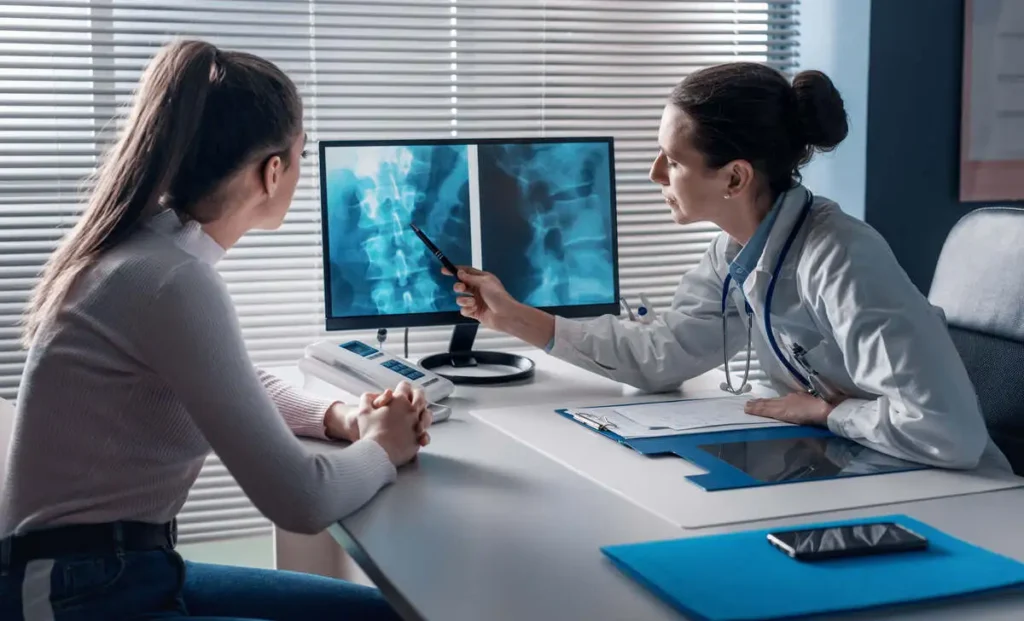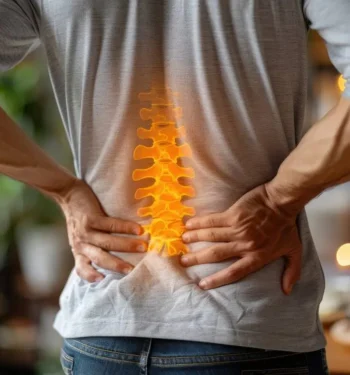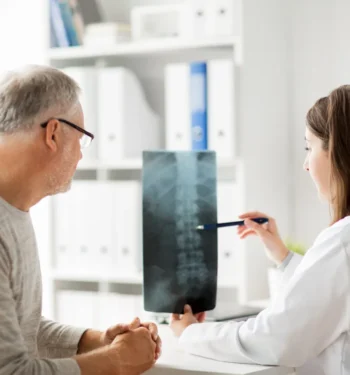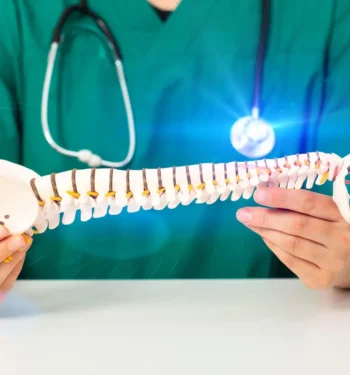
Understanding Spinal Stenosis and Walking Problems
Spinal stenosis is a condition where spaces within your spine narrow, which can put pressure on the nerves traveling through the spine. This narrowing commonly occurs in the lower back (lumbar spine) and the neck, and it often progresses slowly over time. For many patients and families, understanding how walking and mobility are affected by spinal stenosis can be the key to regaining confidence, joy, and control over daily life.
How Far Can You Walk With Spinal Stenosis?
The distance a person can walk with spinal stenosis varies widely and depends on the severity of the narrowing, the specific nerves involved, and the overall health of the individual. Many people notice that they can comfortably walk short distances, but pain, numbness, or weakness may limit their endurance, often causing them to stop and rest frequently. For those in the earlier stages, walking for several blocks may be possible with minimal discomfort. As the condition progresses, some may only be able to walk from room to room before symptoms become too intense to continue. Remember, your journey will be different from other people’s, and support is available to help you keep moving forward. Do not hesitate to request an appointment at Goodman Campbell if you face these challenges.
What Are the Symptoms of Spinal Stenosis When Walking?
Those with spinal stenosis and walking problems often notice a variety of symptoms that can include leg pain, tingling, burning sensations, weakness, or a sense of “heaviness” in the legs when they walk. These symptoms are typically relieved by sitting or leaning forward, which widens the spaces within the spine. Many describe a gradual return of discomfort as soon as they resume standing or walking. These walking difficulties can become life-altering, but recognizing these signs is the first step to receiving the right care. Stay positive and rest assured, there are solutions and compassionate professionals ready to guide your recovery.
Significance of L4-L5 Stenosis and Its Impact on Mobility
One of the most common areas for severe spinal stenosis to occur is between the lumbar vertebrae L4 and L5. Severe spinal stenosis L4-L5 symptoms can include pronounced weakness, tingling, persistent numbness, or even difficulties in controlling foot movement, sometimes called “foot drop.” These symptoms tend to significantly inhibit walking and may cause instability or falls. The good news is that even with serious symptoms, individualized care plans from skilled medical teams can make a tremendous difference. Always discuss options for managing these symptoms and regaining strength with your care provider.
Progression Toward Severe or Final Stages and What This Means for Walking Ability
As spinal stenosis progresses, symptoms during walking usually become more frequent and debilitating. In the final stages of spinal stenosis, individuals may struggle to walk even short distances without severe pain or weakness. There can also be changes in bowel or bladder control and significant leg dysfunction, which signal a need for urgent medical evaluation. Facing such changes can feel overwhelming, but there is hope. Advanced treatments and supportive care can help you maintain dignity, independence, and the best possible quality of life. For reassurance, knowledge, and hope through every stage, ask your doctor about Goodman Campbell to discuss the right plan for you and your family.
What Should You Not Do With Spinal Stenosis?
When living with spinal stenosis, it’s crucial to avoid actions and habits that can worsen pain, numbness, or mobility issues. Certain movements and activities place stress on the spine, which can aggravate spinal stenosis and walking problems, potentially accelerating the progression of symptoms. By understanding which activities are less ideal and making simple modifications to your daily routine, you can help protect your spine, maintain comfort, and continue enjoying your daily life. It is always best to discuss any lifestyle changes with your physician to ensure you’re making the safest choices for your health.
What Movements or Activities Should Be Avoided?
Movements that may worsen spinal stenosis symptoms typically involve placing increased load or extension on the spine. Heavy lifting — especially exercises or tasks that require you to pick up objects with your back instead of your legs — can compress your spinal canal and contribute to pain. Similarly, high-impact sports such as running or jumping may exacerbate discomfort, leading to more significant spinal stenosis and walking problems. Activities involving repetitive twisting or hyperextension (arching your back) should also be limited. Even prolonged standing or walking without rest breaks can increase pressure, especially if your condition is advanced. By being mindful of these activities, you can help reduce unnecessary strain on your spine.
How Can Daily Habits Make Symptoms Worse?
Your daily habits influence your spinal stenosis symptoms more than you may realize. Poor posture while sitting, working at a computer, or driving can put additional stress on your lower back and neck. Slouching, hunching your shoulders, or not using ergonomic support can all make symptoms more pronounced. In addition, activities like bending forward repeatedly or remaining in a single position — either sitting or standing — for long durations without movement may contribute to worsening discomfort and stiffness. By integrating frequent posture checks, using supportive seating, and taking regular breaks to move throughout the day, you give your spine a better chance at healing and relief.
Importance of Modifying Daily Activities to Minimize Discomfort
Being proactive in adjusting your routine can make a remarkable difference. Choose lighter loads when possible, and ask for help with heavier objects. Switch to shoes with excellent support, and use cushioned mats when standing for long periods. When walking, find even terrain and use assistive devices if recommended. Each person’s experience with spinal stenosis is different, so what works for someone else may not suit you; personalize your strategies with guidance from a trusted spine specialist.
Request an appointment at Goodman Campbell for a tailored care plan that helps you avoid harmful activities and approach each day with strength and hope. Expert, compassionate care, delivered in an environment of healing, teaching and discovery, can empower you to move forward safely and comfortably.
What Is the Single Best Exercise for Spinal Stenosis?
While there is no one-size-fits-all workout for managing spinal stenosis, the single best exercise for many people is low-impact walking. This simple but effective activity is gentle on the body, helps maintain mobility, and can ease some of the discomfort associated with spinal stenosis. For many patients, walking creates a pathway to better health and increased independence, especially when guided by a tailored plan from experienced medical professionals.
Low-impact exercises such as walking can significantly improve flexibility, strength, and overall cardiovascular health without placing excessive strain on your spine. Always talk to your doctor first. If you are new to exercise or dealing with advanced symptoms, you may be advised to start with brief sessions and focus on a comfortable pace. As you build stamina, you may notice improvements in pain and daily function. Remember, consistency is key to reaping the long-term benefits of any exercise, and setbacks are a natural part of the journey.
Are Walking Aids Helpful for Exercise?
Walking aids, including canes, walkers, and trekking poles, can make it easier and safer to remain active with spinal stenosis. These devices provide stability, reduce the risk of falls, and allow you to walk farther or in more challenging environments. Using a walking aid can help you move with confidence and minimize any fears related to balance or pain, creating a supportive environment for ongoing activity. Work with a healthcare provider or physical therapist to identify the appropriate walking aid if needed.
What Are Other Safe Exercises For Spinal Stenosis?
In addition to walking, other low-impact activities are often recommended. Options like cycling on a stationary bike, swimming, or water aerobics place minimal pressure on the spine while encouraging gentle movement. Specific stretches and strengthening exercises. such as pelvic tilts, knee-to-chest stretches, and gentle core activation, are commonly suggested by physical therapists to help alleviate stiffness, support the spine, and enhance your overall quality of life.
Why Is Individualized Physical Therapy Important?
Every case of spinal stenosis is unique, so individualized physical therapy stands out as an essential element of any exercise plan. A licensed therapist can assess your needs, correct your form, and adjust your regimen to maximize benefits without causing harm. Regular physical therapy appointments ensure your plan evolves as you do, keeping you motivated and safe throughout your journey.
If you are seeking guidance and encouragement on staying active within your limits, ask your doctor about Goodman Campbell for exercise guidance. Their specialized team can design an exercise program uniquely suited to you, with a compassionate approach that empowers every step forward.
How Do You Stop Spinal Stenosis From Progressing?
Spinal stenosis is a condition that, while it can be progressive, can often be managed proactively to slow or even halt the worsening of symptoms. Taking positive steps in your daily life, such as engaging in regular activity, maintaining a healthy weight, and actively managing your condition, can help you keep moving and living life to the fullest. Early intervention and ongoing care are key to preventing the condition from impacting your independence and quality of life over the long term.
What Steps Can Be Taken to Slow or Prevent Worsening Symptoms?
One of the most empowering things you can do is take charge of your lifestyle. Regular, low-impact exercise improves circulation, keeps your back strong, and reduces the risk of further deterioration. Activities like walking, swimming, and gentle stretching, tailored to your abilities, can support spinal health and ease discomfort. Equally important is maintaining a healthy weight, as extra pounds can put additional strain on your spine, potentially accelerating the progression of spinal stenosis.
Posture matters, too. Practice mindful movements and avoid positions that place unnecessary stress on your back. Consider creating an ergonomic home and work setup to support the natural curves of your spine. For many patients, modifying daily routines and listening to their bodies can result in less pain and greater freedom.
What Treatments and Routines Are Recommended?
Your doctor may recommend a personalized regimen that includes physical therapy, which focuses on specific exercises to enhance flexibility, balance, and muscular strength. Physical therapists will often introduce methods to improve your gait and posture as you walk, providing you with the confidence to tackle daily tasks and enjoy your favorite activities safely. In some cases, medications can play a role in symptom management and help you stay active.
For people whose symptoms significantly affect daily life, other options, including steroid injections for pain management or surgery, such as decompression or stabilization procedures, may be considered. Advances in medical care mean that there are numerous ways to tailor treatment to your unique situation and goals.
Strategies for Long-Term Management and Quality of Life
Living well with spinal stenosis is possible through commitment to self-care, ongoing medical supervision, and the support of your loved ones. Educate yourself and remain aware of how your body feels; small changes, such as daily walks or healthy meal planning, can lead to meaningful improvements. And with early, sustained attention to your condition, many people can live long, fulfilling lives with spinal stenosis.
Ask your doctor about Goodman Campbell to discover all your options and create a path to lasting well-being. With expert care and a proactive attitude, you can take positive steps every day to manage spinal stenosis and pursue a brighter, more active future.
Conclusion: Staying Active and Seeking Expertise
When facing the challenges of spinal stenosis, staying as active as is safely possible can offer tremendous benefits to your health, happiness, and overall quality of life. However, each person’s journey is different, which is why seeking individualized expert care is so important. A skilled healthcare team can provide tailored guidance on how far you can walk, when to use spinal stenosis walking aids, and which daily activities are best suited for preserving your comfort and independence.
Why Is It Important to Seek Expert Care?
Turning to experienced specialists ensures you receive a care plan that takes your unique symptoms, medical history, and goals into account. Experts help identify safe boundaries, monitor your progress, and offer adjustments if new issues arise. By seeking knowledgeable support, you can avoid unnecessary setbacks and prevent activities that may worsen your condition. It’s this careful guidance that gives you confidence, minimizes risk, and paves the way to maintaining an active, fulfilling lifestyle.
How Can Goodman Campbell Help?
Specialized teams like Goodman Campbell understand the complexities of spinal stenosis. Whether you are wondering how far you can walk with spinal stenosis, need advice on using walking aids, or want to discuss cutting-edge treatments, Goodman Campbell provides compassionate, personalized expertise. The team’s comprehensive approach provides everything from physical therapy to interventional pain management to surgical options, helping you find the right balance between activity and rest. With their support, many patients discover new ways to stay engaged in the activities that bring them joy.
Above all, remember that with professional guidance and the right tools, it is possible for spinal stenosis patients to regain confidence, strength, and hope for the future. If you or a loved one are navigating the challenges of spinal stenosis, do not hesitate to reach out to America’s most accomplished and progressive brain and spine team. Request an appointment or ask your doctor about the comprehensive support and heartfelt dedication offered by Goodman Campbell.


